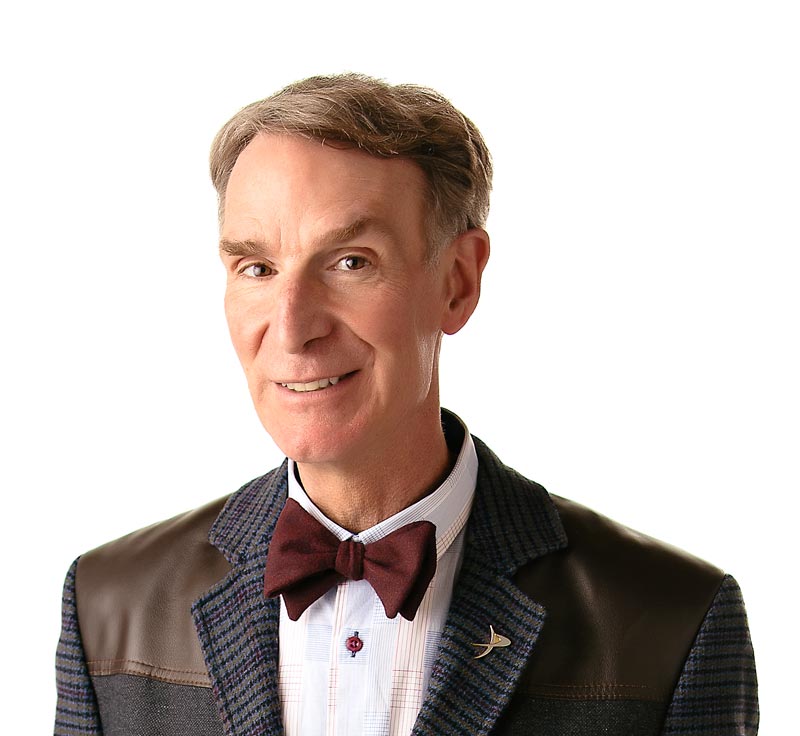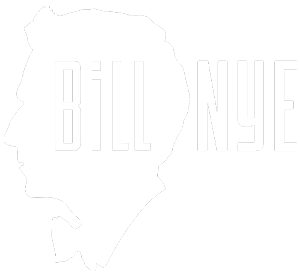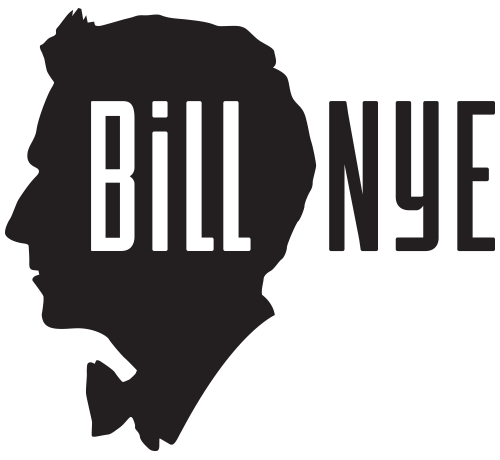Fluids
Watch Bill Nye go with the flow in the “Fluids” episode.
What do syrup, milkshakes, and air all have in common? They’re all fluids, or stuff that can flow, bend, squish, move, dodge, or mosey out of the way without breaking or separating. Liquids and gases that flow are all fluids.
When you swim, you push on the water with your hands and feet. It’s thick enough to let you pull yourself along, but it flows and swirls around enough so that you can pass through it. You can swim through water – it’s a fluid – but you can’t swim through a TV set – it’s a solid. When you walk, the air in front of you moves around you, so you can get ahead. If air were not a fluid, each step would be like walking through a brick wall.
Fluids are cool; they ooze and swoosh. Whatever container you put a fluid in, that fluid will take the same shape. Milk poured into a pitcher forms to the shape of the pitcher. If you pour it into a glass, it takes the shape of the glass. You just can’t do that with a boulder. But with the right container, you could pour liquid rock from below the Earth’s crust. Fluids still act like fluids, even halfway to the center of the Earth.
The molecules (tiny, tiny particles) of warm fluid are bouncing against each other faster than cold molecules. Warm fluids are more spread out than cold fluids. Gravity pulls cold fluids down. Cold fluids sink and squeeze warm fluid up. Differences in temperature create differences in pressure that makes fluids move and mix. When fluids in our atmosphere move around like this, we call it wind, weather, and storms.
The Big Ideas
- Liquids and gases are fluids.
- Warm fluids can be squeezed up by cold fluids.
- The atmosphere, the ocean, and parts of the inside of the Earth are fluids.
Did You Know That?
- The Earth’s crust moves around on fluid rock – the layer of Earth below the continents and ocean is gooey and hot?
- When the Exxon Valdez ran aground in Prince William Sound, Alaska, 40 million liters (10.2 million gallons) of crude oil spilled into the ocean in the first twelve hours? The fluid spread out over 2300 square kilometers (900 square miles)!
Books of Science!
- Water Other Liquidsby Robert Mebane and Thomas RyboltTwenty-First Century Books, 1995
- The Super Science Book of Materialsby Graham Peacock and Cally ChambersThomson Learning, 1993.


